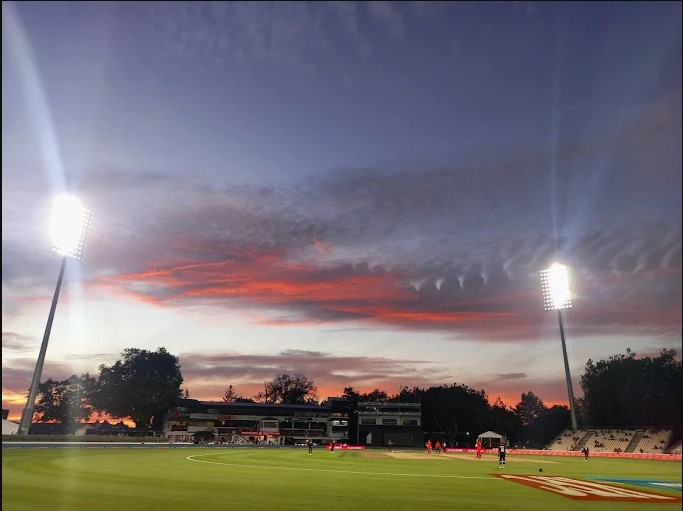Seddon Park, located in Hamilton, New Zealand, is one of the most picturesque and fan-friendly cricket stadiums in the world. Known for its village-green atmosphere, well-maintained pitches, and balanced playing conditions, the ground has hosted a number of international and domestic matches. One of the key dimensions that influence match dynamics at Seddon Park is its boundary length—an often overlooked but crucial aspect of cricket strategy.
Table of Contents
This article explores the boundary dimensions of Seddon Park, how they impact the game, how they compare with other major grounds, and why players and analysts pay close attention to these measurements.
Overview of Seddon Park
| Feature | Detail |
|---|---|
| Location | Hamilton, New Zealand |
| Established | 1950 |
| Capacity | Approx. 10,000 |
| Ends | Members End and City End |
| Home Team | Northern Districts |
| International Matches Hosted | Tests, ODIs, T20Is |
Boundary Length Dimensions
The boundary length at a cricket stadium isn’t fixed—it can vary depending on the pitch used for a particular match. However, most ICC-approved venues have standard ranges, and Seddon Park adheres to these dimensions.
Typical Boundary Length at Seddon Park
| Direction | Average Length (Meters) | Range (Meters) |
|---|---|---|
| Straight | 68–72 m | 65–75 m |
| Square (off and leg side) | 62–67 m | 60–70 m |
| Behind the Wicket (Fine Leg/Third Man) | 58–64 m | 55–65 m |
| Long-on/Long-off | 66–70 m | 63–72 m |
- Straight boundaries at Seddon Park tend to be average in international terms, providing a fair contest between bat and ball.
- Square boundaries are slightly shorter, which allows for easier placement shots and pull strokes, especially in white-ball formats.
- Fine-leg and third-man areas are particularly vulnerable to glances and edges due to the shorter length.
These dimensions may change slightly depending on the pitch used on the wicket block (Seddon Park has a central pitch square with multiple tracks), but generally, the variations are within the above ranges.
Impact of Boundary Length on Match Strategy
Boundary length is critical in shaping game tactics. At Seddon Park, the moderate boundary sizes allow for both aggressive batting and strategic bowling.
For Batsmen
- T20 Advantage: The relatively shorter square and behind-the-wicket boundaries are a boon for batsmen, especially in T20s, where improvisational strokes like ramps, sweeps, and scoops are rewarded.
- ODI Flexibility: Batsmen can rotate the strike easily due to the shorter boundaries and faster outfield.
- Test Cricket: Long innings can benefit from regular boundary opportunities, encouraging stroke play even in the longer format.
For Bowlers
- Spinners and Medium Pacers: Bowlers must adjust lengths to avoid being punished on the shorter sides. Variations in pace and angles become essential.
- Fast Bowlers: Bouncers that climb chest-high can be ramped or pulled for boundaries, making line-and-length consistency crucial.
Comparison with Other Major Stadiums
To understand the dimensions better, let’s compare Seddon Park with other popular grounds in New Zealand and globally:
| Stadium | Straight Boundary | Square Boundary | Fine Leg/Third Man |
|---|---|---|---|
| Seddon Park (Hamilton) | 68–72 m | 62–67 m | 58–64 m |
| Eden Park (Auckland) | 55–60 m | 45–50 m | 40–50 m |
| Hagley Oval (Christchurch) | 70–75 m | 65–70 m | 60–65 m |
| MCG (Australia) | 80–85 m | 85–90 m | 70–75 m |
| Lord’s (England) | 65–75 m | 60–70 m | 55–65 m |
Seddon Park falls on the medium-to-smaller side of global stadium dimensions. Eden Park is particularly unique with extremely short square boundaries, while the MCG remains one of the largest.
Records Influenced by Boundary Dimensions at Seddon Park
- Highest T20I Total: New Zealand scored 243/5 against West Indies (2020).
- Highest Individual Score (ODI): Martin Guptill scored 189* vs England (2013).
- Frequent Six-Hitting Venue: Especially in T20Is and ODIs, Seddon Park sees a high frequency of sixes in the midwicket and backward square regions.
Boundary Strategies for Captains and Coaches
Captains use field placement and bowling strategy creatively at Seddon Park to mitigate the risks posed by the smaller boundaries.
Fielding Placements
- Sweeper Cover and Deep Midwicket: Almost always deployed to cut off boundaries.
- Third Man and Fine Leg: Often kept deep due to vulnerability from scoops and edges.
Bowling Strategies
- Off-Stump Line with Fielding Support: To limit access to the leg-side boundary.
- Slowers and Yorkers: Reduce elevation and distance on big shots.
- Spinners bowling wide lines: Encourage mis-hits towards the larger parts of the ground.
External Conditions and Their Effects
Seddon Park’s boundary dimensions interact with natural conditions that further influence the game:
- Dew Factor: Evening games can bring dew, making the ball skid and enhancing boundary scoring.
- Wind Conditions: Breeze from one end can aid swing or push the ball toward or away from the boundary, influencing shot selection.
- Pitch Behavior: Flat pitches make it easier to clear the shorter boundaries; drier tracks help spinners but require tight lines to prevent boundaries.
Seddon Park’s boundary dimensions, though not extreme in any way, present a balanced yet slightly batsman-friendly landscape that influences every aspect of the game—from batting approach to bowling tactics to field placement. While its picturesque setting and central location make it a fan favorite, it’s the field geometry that often shapes match outcomes in subtle but strategic ways.
Understanding these dimensions gives fans, analysts, and players valuable insight into why certain games unfold the way they do at Seddon Park. For cricket strategists, boundary length isn’t just a number—it’s a tactical variable that can define victory or defeat.


